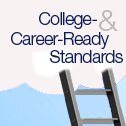The United States is making progress in improving the pipeline from high school to college, but there is still significant work to do, a new report says.
Challenges facing students today are threatening to impede the country’s progress in educational attainment, says the report from Civic Enterprises and the Everyone Graduates Center at John Hopkins University’s School of Education. The report was sponsored by AT&T and the Lumina Foundation as part of a campaign to increase the U.S. graduation rate to 90 percent for the class of 2020.

The report examined new and existing longitudinal data on three cohorts of young adults—the 25-to-34-year-olds of today, the 25-to-34-year-olds of 2025, and the 25-to-34-year-olds of 2035. The findings, said John Bridgeland, the CEO of Civic Enterprises, were that of promise and alarm.
The first cohort—the young adults of today—have the highest postsecondary attainment rates in history. About half have an associate degree or more. Women, particularly those from affluent families, drove much of this growth: 50 percent of young women have earned a degree of some type, compared to 42 percent of young men. And while more black and Hispanic young adults are earning degrees, there is a 15-percentage-point gap between white-black degree attainment, and a 30-percentage-point gap between white-Hispanic attainment.
The second cohort—today’s high school and college students—has seen gains in high school graduation rates, particularly among black, Hispanic, and low-income students. The report projects that this group is on track to be the first cohort of young adults in the past half-century that will experience both rising educational attainments for everyone and the closing of opportunity gaps for students of color and low-income students.
Latino student enrollment in higher education institutions more than doubled between 2000 and 2014, and black and low-income students are on a similar upward trend. But the report notes that there is an unequal breakdown in access and the types of institutions students of color are often attending—students of color, particularly Hispanic students, live in areas with fewer postsecondary options, especially institutions that offer four-year degrees.
The third cohort—today’s 1st through10th graders—will not see the same progress as their predecessors without significant reforms, the report warns. Data shows that the vast majority of students who graduate from high school and do not immediately enroll in college are not adequately prepared to succeed. And by 2020, the majority of jobs will require some postsecondary credential or degree. This cohort is also comprised mostly of students who are nonwhite or low-income—and less than 60 percent of low-income high school graduates enroll immediately in college after high school.
“We’re making progress and boosting outcomes in high school and also college, but [we need to] put our foot on the gas—make sure we close these opportunity gaps,” Bridgeland said in an interview.
The report outlines possible solutions to three big challenges facing the country, in order to ensure that college attainment rates continue to rise and opportunity gaps narrow.
First, improve results in the 800 to 1,000 low-graduation-rate high schools throughout the country. Bridgeland said he hopes that the Every Student Succeeds Act will help with this goal. “ESSA has a laser-like focus—states have to identify those high schools and develop comprehensive plans to which they’re accountable,” he said. And 7 percent of Title I money can be used by districts to reform those schools, which Bridgeland said is a significant change.
Second, policymakers must support access to higher education in “education deserts” and low education-attainment communities. Students who are low-income and students of color are often reluctant to travel beyond their hometowns, Bridgeland said. Asking or expecting students to move is not the solution, he said—instead, policymakers should support community colleges and other institutions that are already there, and expand four-year institutions into those areas.
Third, educators must work to help students with low GPAs go on to succeed in college. Bridgeland said there needs to be more of an emphasis on identifying struggling students early on. Also, he said, educators need to focus on the transition from high school to college—do students have the suite of academic knowledge and social and emotional skills to succeed in school? Are students taking a sequence of classes that prepare them for college, or will they need additional supports or remediation? One important finding, Bridgeland said, was that “students didn’t see a connection between learning in school and what they want to do in life.”
Bridgeland said he hopes the report will start a deeper conversation about how both K-12 and higher education systems can help support student success throughout the pipeline.
